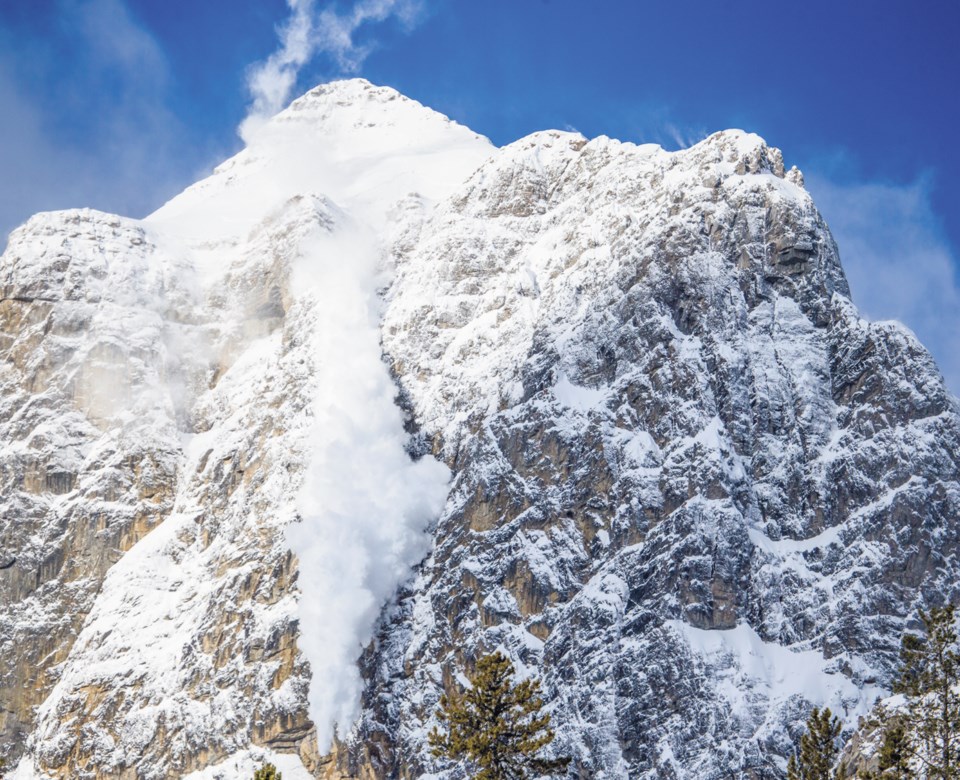BOW VALLEY – With upwards of 60 centimetres of snow falling in Kananaskis Country last week during a major early season storm, public safety officials are warning of early season backcountry avalanche conditions throughout the Rocky Mountains.
While Avalanche Canada's website states that "insufficient observations exist to reliably rate the avalanche danger," backcountry enthusiasts can expect shallow snow cover with rocks buried below the surface.
As part of a Thanksgiving long weekend video on social media, Kananaskis Country public safety specialist Mike Koppang said with a major snowfall last week, avalanche activity has already been observed in the alpine.
"It is uncommon," Koppang said about the amount of snowfall already in the alpine. "There are tonnes of people out skiing and climbing. This time of year we typically see an avalanche involving an ice climber. It has happened for a number of years and we put out this early season warning to make people think about it.
"There is usually not a lot of snow through the lower elevations, but if you climb into the alpine you are going to running into more and more snow."
Koppang said for those heading into avalanche terrain to make sure they have the appropriate equipment – beacon, shovel and probe – as well as training and knowledge to know how to use it. While there isn't yet a need to put out daily avalanche bulletins, he said backcountry enthusiasts heading into early season avalanche terrain at higher elevations should be thinking about the consequences of their actions.
"Be thinking about the consequence of a fall and a fall with an avalanche associated with it," Koppang said. "There is not a lot of snow out there you are going to be raked through the rocks."
[embed]https://www.facebook.com/KCPublicSafety/videos/1634169920020970/[/embed]
According to Avalanche Canada's website, early season conditions that are appealing for those seeking a spot to ski or snowboard are also the places where avalanche hazards develop first – gullies, alpine bowls and around ridge lines. On smooth terrain, like glaciers, shale slopes and rock slabs, it takes as little as 30 centimetres to create an avalanche, especially when combined with warm temperatures and rain
Parks Canada has also issued an avalanche bulletin for Banff, Yoho and Kootenay National Park, noting the same early season snowpack conditions as Kananaskis Country. That follows a warning on Sept. 22 after several natural avalanche reports were received and two climbers were buried in a 2.5 size avalanche on Mt. Athabasca in Jasper National Park on Sept. 19.
According to Avalanche Canada, if you’re heading out before avalanche forecasts are available, gather as much information as possible about local conditions before you travel:
- Talk to people who have been out recently. Preferably talk to experienced local riders who have been near to or where you’re going in the past couple of days. Did they see any avalanche activity? Did the snow surface feel dense? Were cracks shooting out from their skis? Did it have a loose, weak layer near the ground?
- Keep track of the weather. Danger is often highest during and immediately after a storm. Give the snowpack time to settle and stick to mellower terrain if the weather has recently been stormy.
- Know what’s under the snow you’re travelling on. Riding or climbing on steep terrain where a fresh slab overlies last year’s old snow or glacial ice carries additional risk.
- Ice climbers are traditionally at greater risk in early season. Many ice climbs form beneath high elevation start zones that aren’t visible when you’re actually on the climb. Know the terrain and assess snow conditions that lie above your route. Seek knowledge and advice if you are not familiar with a climb and can’t see what’s above. Be cautious on the approach as well as on your climb. Choose safe belays spots and carry transceivers, probes, and shovels.
More snow is also expected for western Alberta Monday and Tuesday (Oct. 9) this week according to Environment Canada forecasts.




